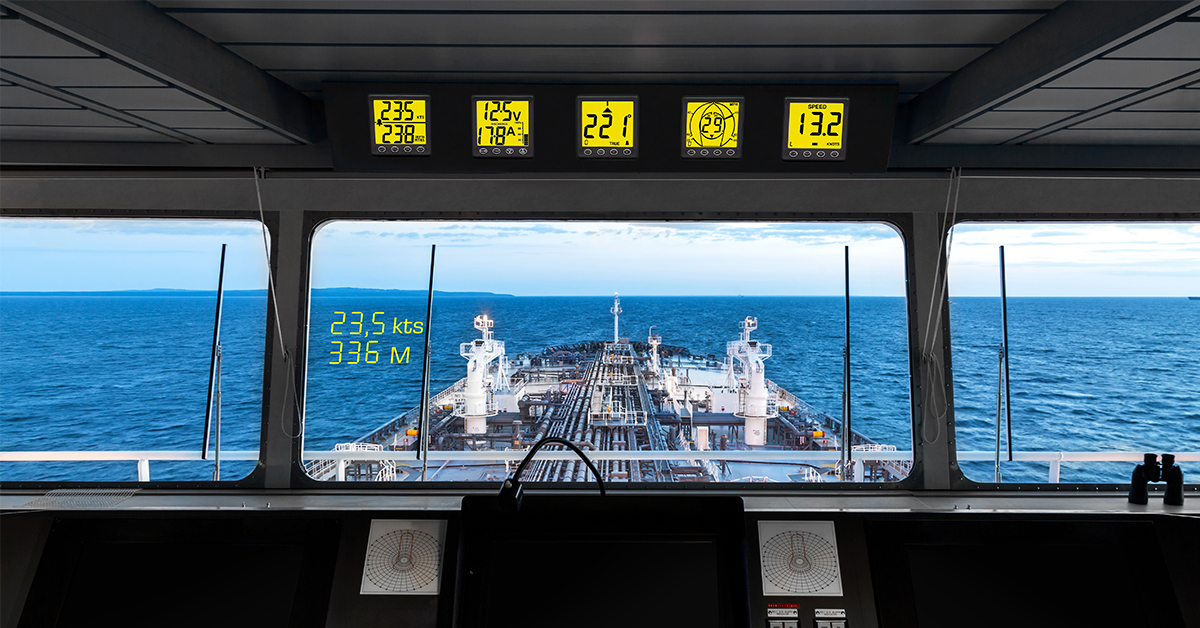Transparent displays increase safety in cockpits and driver environments. Being able to add a see-through display in the line of sight allows new innovative instrumentation solutions. In-glass laminated HUD displays that disappear when the information is not required add value to windows, save dashboard space and improve ergonomics.
Increased situational awareness with transparent displays
A special command environment where visibility and situational awareness is of utmost importance are naval bridges. The decks of large vessels are cluttered with advanced equipment, many of which have displays with continuously changing information. This results in sequential data collection, which is known to be distracting and stressful for the persons in command of the ship. Improving situational awareness and reducing clutter on the bridge is therefore a major development opportunity for the providers of ship instrumentation and navigation equipment.
Needless to say, vessel command environments are also a hot application area for our transparent Lumineq displays. When integrated in or on the windows of the command bridge, Lumineq displays permit simultaneous observation of the surroundings and critical data. The display options are limitless; showing navigation data in windows is just one example. The fact that the display vanishes when it is not in use also makes it ideal for presenting safety information. A warning signal that appears in the window in the line of sight is impossible to miss even in demanding conditions.
Only Lumineq displays can be laminated in windscreens
There are many displays in the market that are marketed as transparent, but their real-life transparency varies significantly. The best transparent OLED displays in the market today may reach transmissivity values of 45%. The transmittance levels of transparent LCD displays are typically much lower than that. While that may be OK for retail applications, vending machines with background lighting and digital signage indoors, the transparency requirements for delivering critical information in windows in daylight are on a totally different level.
The transparency of displays in windscreens is also regulated by law. In many countries, the minimum requirement for the light transmission of vehicle windshields is 70%.
The invisible Lumineq displays can provide over 80% transmission values and meet the 70% transparency requirement even when laminated in the windshield. That is what we call transparent. So if you are looking for transparent displays that can be integrated in windscreens and windows in demanding environments, such as naval bridges, there really is only one display type that will meet your transparency requirements.
Clear views ahead!
